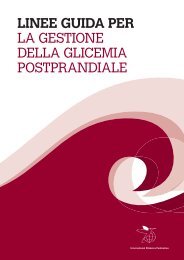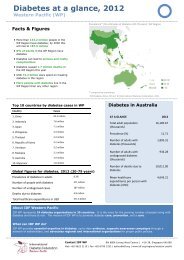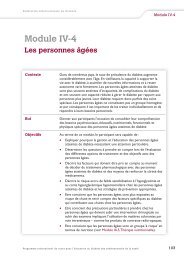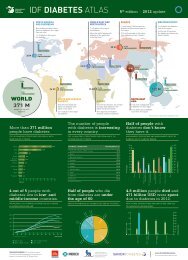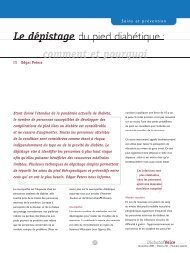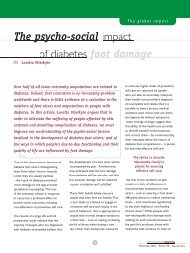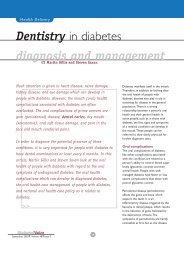Autosurveillance - International Diabetes Federation
Autosurveillance - International Diabetes Federation
Autosurveillance - International Diabetes Federation
You also want an ePaper? Increase the reach of your titles
YUMPU automatically turns print PDFs into web optimized ePapers that Google loves.
Directive sur l’autosurveillance glycémique<br />
dans le diabète de type 2 non traité par l’insuline<br />
64. Phillips LS, Branch WT, Cook CB et al. Clinical<br />
inertia. Ann Intern Med. 2001;135:825-834.<br />
65. Ziemer DC, Miller CD, Rhee MK et al. Clinical<br />
inertia contributes to poor diabetes control in a<br />
primary care setting. <strong>Diabetes</strong> Educ. 2005;31:564-571.<br />
66. Grant RW, Buse JB, Meigs JB. Quality of diabetes<br />
care in U.S. academic medical centers: low<br />
rates of medical regimen change. <strong>Diabetes</strong> Care.<br />
2005;28:337-442.<br />
67. Jansen JP. Self-monitoring of glucose in type 2<br />
diabetes mellitus: a Bayesian meta-analysis of direct<br />
and indirect comparisons. Curr Med Res Opin.<br />
2006;22:671-681.<br />
68. Sarol JN, Jr., Nicodemus NA, Jr., Tan KM et al. Selfmonitoring<br />
of blood glucose as part of a multicomponent<br />
therapy among non-insulin requiring<br />
type 2 diabetes patients: a meta-analysis (1966-<br />
2004). Curr Med Res Opin. 2005;21:173-184.<br />
69. Mayfield J, Harvis H, AAFP Panel on Self-Monitoring<br />
of Blood Glucose. Self-control: a physician’s guide<br />
to blood glucose monitoring in the management of<br />
diabetes. American Family Physicians (Monograph).<br />
2004. Leawood, Kansas, American Academy of<br />
Family Physicians. Ref Type: Generic<br />
70. Parkin C, Brooks N. Is postprandial glucose control<br />
important? Clin <strong>Diabetes</strong>. 2002;20:71-76.<br />
71. Dailey G. Assessing glycemic control with selfmonitoring<br />
of blood glucose and hemoglobin A(1c)<br />
measurements. Mayo Clin Proc. 2007;82:229-235.<br />
72. Gerich JE, Odawara M, Terauchi Y. The rationale<br />
for paired pre- and postprandial self-monitoring<br />
of blood glucose: the role of glycemic variability in<br />
micro- and macrovascular risk. Curr Med Res Opin.<br />
2007;23:1791-1798.<br />
73. Heisler M, Vijan S, Anderson RM et al. When do<br />
patients and their physicians agree on diabetes<br />
treatment goals and strategies, and what difference<br />
does it make? J Gen Intern Med. 2003;18:893-902.<br />
74. Brewer KW, Chase HP, Owen S et al. Slicing the<br />
pie. Correlating HbA--values with average blood<br />
glucose values in a pie chart form. <strong>Diabetes</strong> Care.<br />
1998;21:209-212.<br />
75. Bergenstal R, Pearson J, Cembrowski GS et al.<br />
Identifying variables associated with inaccurate selfmonitoring<br />
of blood glucose: proposed guidelines to<br />
improve accuracy. <strong>Diabetes</strong> Educ. 2000;26:981-989.<br />
76. Bergenstal R. Evaluating the accuracy of modern<br />
glucose meters. Insulin 3[1], 5-14. 2008. Ref Type:<br />
Journal (Full)<br />
77. Solnica B, Naskalski J. Quality control of selfmonitoring<br />
of blood glucose: Why and how? J Diab<br />
Sci Tecn 1[2], 164-68. 2007. Ref Type: Journal (Full)<br />
38





